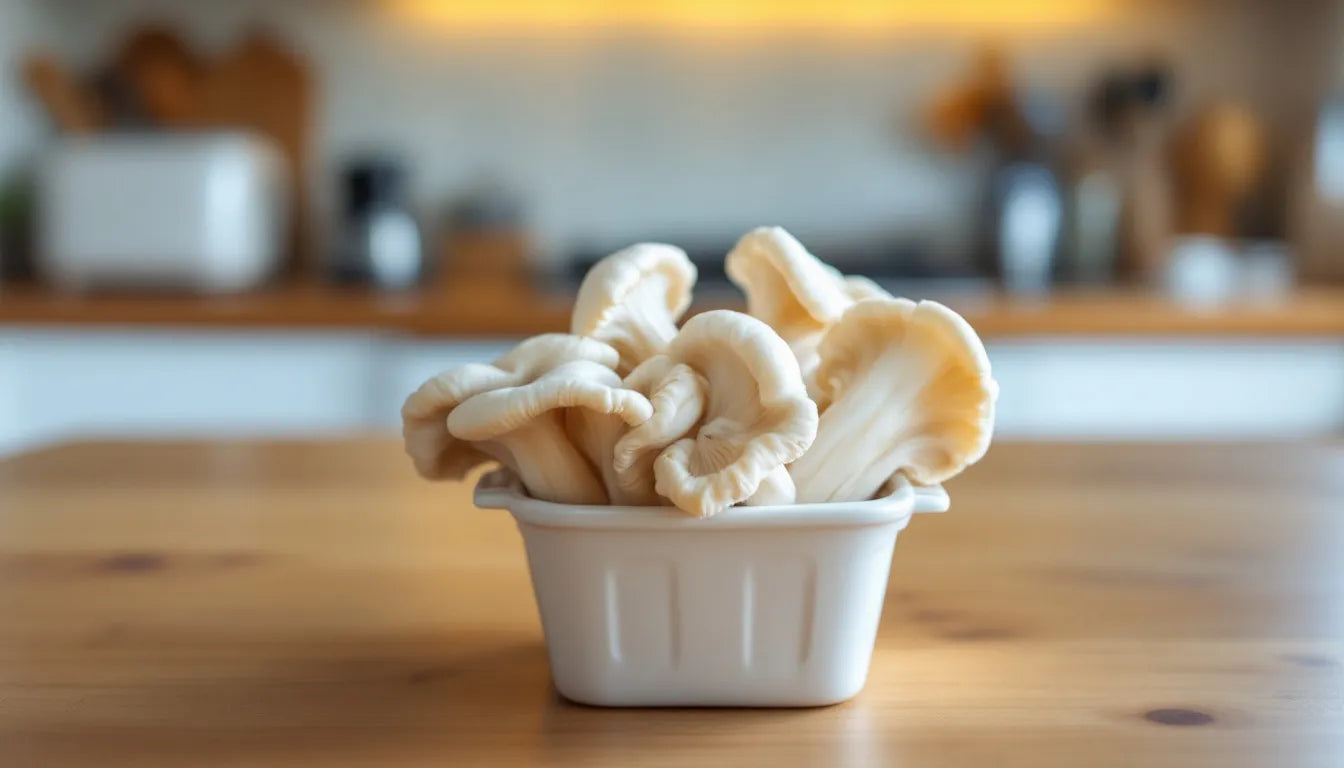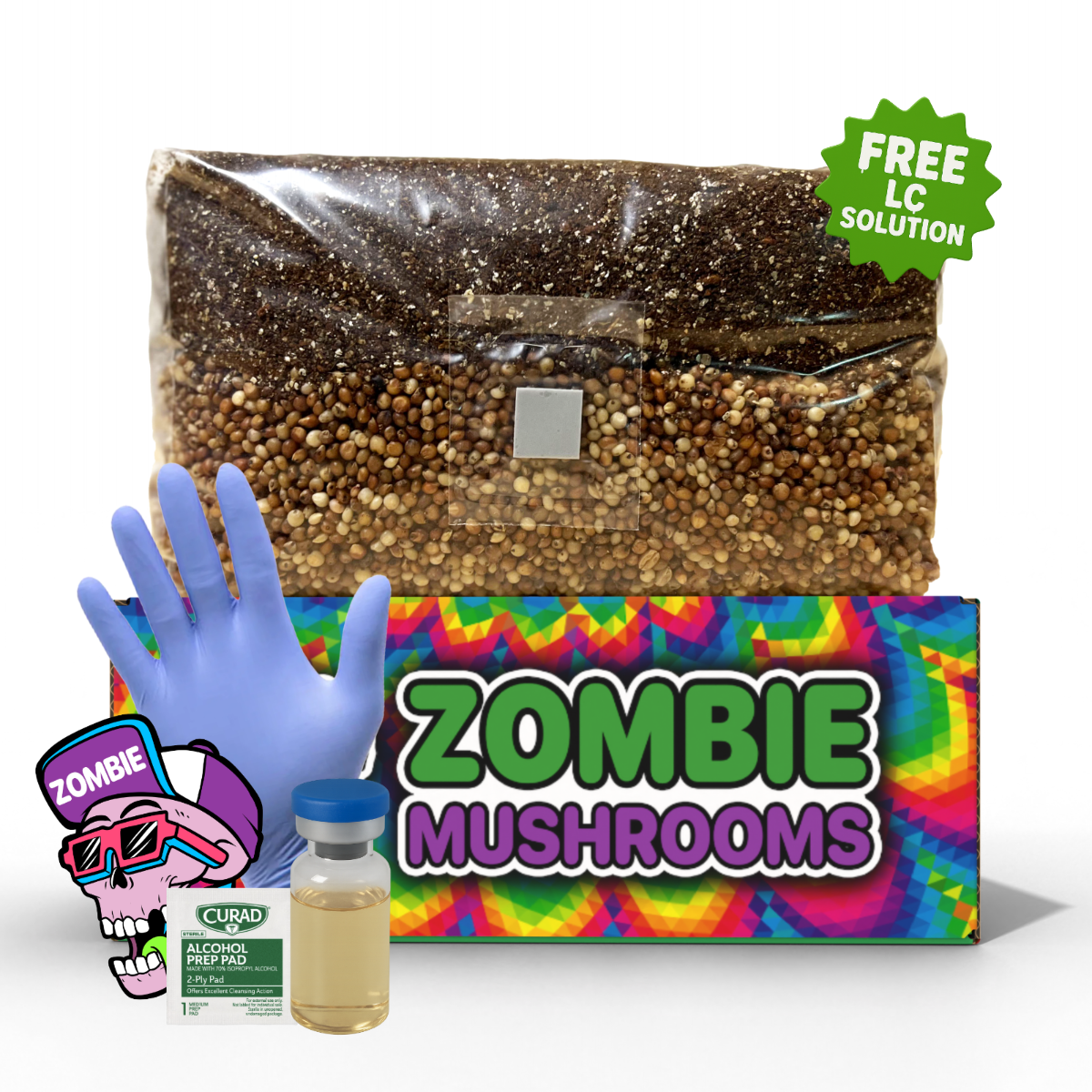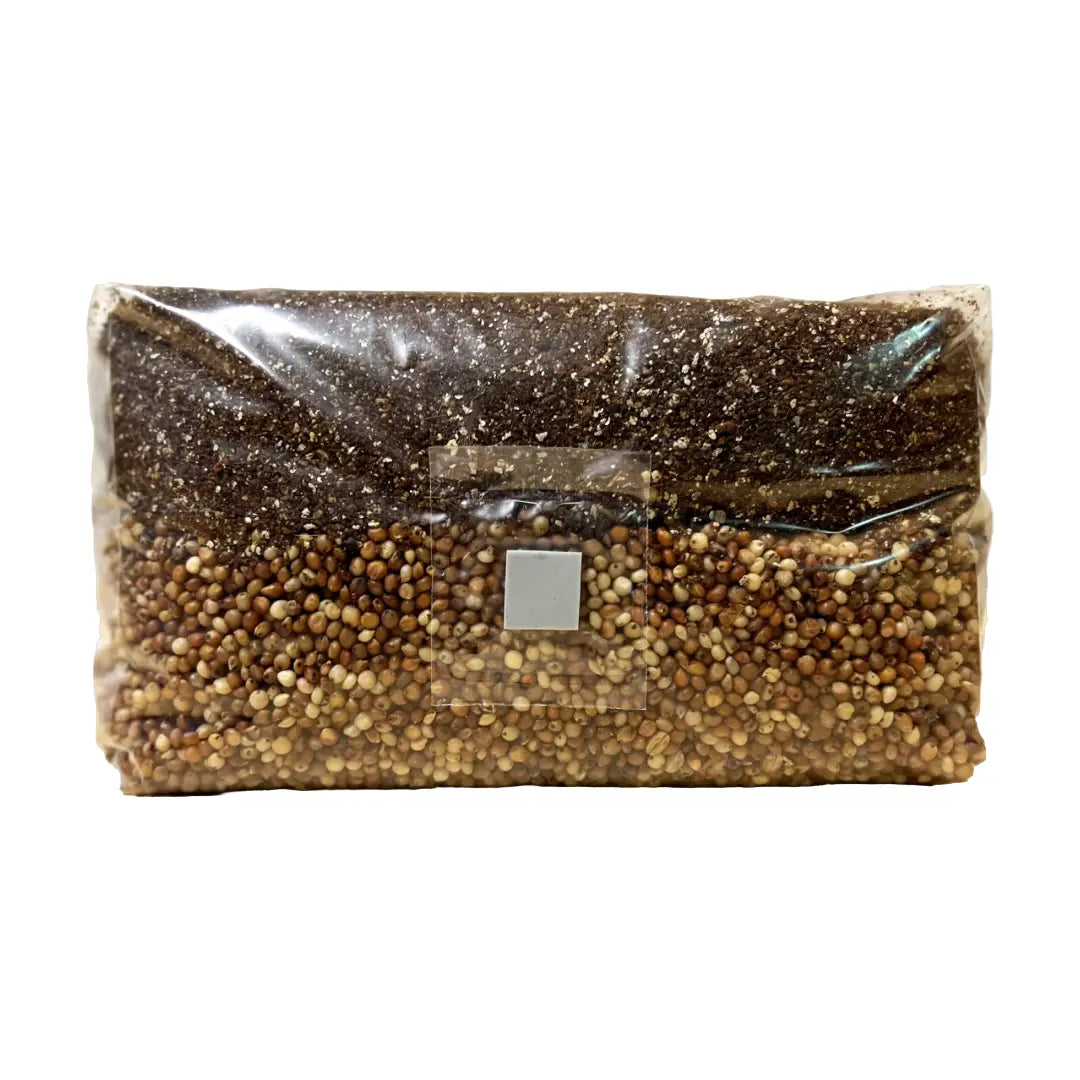⬇️ Prefer to listen instead? ⬇️

- Lion’s Mane reduced depressive symptoms by 24% in human trials.
- Psilocybin mushroom growing is illegal in many areas—always check local laws.
- “Mycelium Running” popularized mycoremediation and ecological uses of fungi.
- “The Mushroom Cultivator” remains a top-tier guide for commercial setups despite its age.
- Medicinal mushrooms like Reishi and Turkey Tail show documented immune system effects.
Mushrooms are popular now. People are more interested in mental health, farming that helps the earth, and natural medicine. Because of this, many people want good books about growing mushrooms. You might want to grow mushrooms for yourself, to feel better, or to sell. Our easy grow kits are perfect for beginners, giving you everything you need to start growing mushrooms at home without any experience.
The right books can help you learn faster and not make mistakes. This guide looks closely at the best books for growing mushrooms. It puts them into groups based on what you want to learn and how much you already know. There are books for people just starting, people interested in psilocybin, big farmers, and people looking for medicinal mushrooms.

Best Books for Beginner Mushroom Cultivators
You might want to grow special mushrooms or use complex methods right away. But first, you need to know the basics. For beginners, knowing how fungi grow, steps like adding spores, picking the right soil mix, and keeping things clean helps a lot with your first time growing.
What to Look For in Beginner Books
- Clear visuals & step-by-step walkthroughs
- Recipes for easy techniques (like PF Tek)
- Common pitfalls & troubleshooting tips
- Definitions of essential terms: mycelium, colonization, fruiting, etc.
- Accessible language for total novices
🔍 Top Picks:
1. “Mycelium Running” by Paul Stamets
- This book is often suggested for learning about fungi in nature. But it is also very helpful for beginners. It tells how fungi work in nature. It also helps you learn to grow mushrooms by showing you good places for them, simple ways to grow, and some easy types like oyster, shiitake, and lion’s mane. It mixes ideas about fungi with basic growing steps. So, it is good for people who are curious and like to work with their hands.
2. “The Essential Guide to Cultivating Mushrooms” by Stephen Russell
- This book focuses more on how to grow mushrooms. It covers important ways to grow that help you do well when you start. It has clear pictures and language that is easy for people new to this. Russell shows you how to grow oyster mushrooms at home. You can use simple kitchen tools and things you have around the house. You will also learn how to prepare the soil mix, control water in the air, and build a simple box for growing without spending a lot.
Topics You’ll Learn:
- Basic biology of fungi
- Life cycle of popular edible mushrooms
- Starting mushroom cultures from spores or clones
- Typical contamination sources and how to avoid them
- Maintaining environmental conditions (light, temp, humidity)
These beginner books help you start with good habits. This saves you time and money as you learn to grow.

Comprehensive Cultivation Handbooks for Intermediate to Advanced Growers
You know how to add spores and see your mycelium grow. Now you are ready to grow more, do it better, and try new things. Growers who know a bit already or are more skilled need to learn more about working in a sterile space, using agar plates, using bigger growing tubs, using machines to control the environment, and using more spawn.
📘 Recommended Reads:
1. “Growing Gourmet and Medicinal Mushrooms” by Paul Stamets
- This is a very complete book. It covers a lot about the biology, physics, and science of growing mushrooms. It is good for growers who want to make their growing bigger or use machines to work better. Stamets gives steps for specific types (like pink oyster, enoki, maitake). He also includes lab methods and ideas for growing big amounts. For example, he talks about controlling air flow and setting up different growing areas.
2. “Organic Mushroom Farming and Mycoremediation” by Tradd Cotter
- Cotter puts together simple indoor growing methods with bigger ideas about helping nature and being sustainable. He shares his ideas on using mushrooms to clean up soil, break down waste, and work with other plants. This makes the book special for both growers and people who care about nature.
Advanced Topics Covered:
- Grain spawn production and clone culturing
- How to isolate fungal strains and expand yield
- Liquid culture techniques for fast colonization
- Building laminar flow hoods and sterile rooms
- Grow room humidity, lighting systems, and air filtration
- Commercial log systems versus bag fruiting systems
These books go way past just kits and jars. They give you the ideas, steps, and science you need to grow mushrooms like a pro and help the environment.
Psilocybin Mushroom Growing Guides: Legality & Best Practices
People around the world are talking more about psychedelics. Some cities and countries are starting to make psilocybin therapy legal or allow research. This means more people want to grow them at home. But laws are still very different and complicated. Also, in many places, the government still controls psilocybin.
🚨 Legal Note:
Always check your country, state, or municipality's legal stance on cultivating psychoactive fungi before purchasing spores, syringes, or cultivation books.
⚗️ Responsible and Informative Titles:
1. “The Psilocybin Mushroom Bible” by Virginia Haze & Dr. K. Mandrake
- This is likely the most complete book for growing Psilocybe cubensis at home where it is allowed by law. It covers all the growing steps. This includes PF Tek and using large amounts of soil mix. It also talks about collecting spores, keeping them, building a box for growing, and fixing problems with contamination. It is made for people new to studying fungi who want to grow psilocybin mushrooms.
2. “The Psilocybin Chef Cookbook” by M. Green House
- This book is mostly about recipes and how to use small amounts regularly. But it also includes important words about growing and helpful tips. It talks about legal worries, using them safely, thinking about where you are and how you feel, and figuring out how strong they are. This is part of getting psilocybin ready to use for help.
Ethical Topics Often Covered:
- Harm reduction for psychedelic use
- Dosage awareness (fresh vs dried)
- Safety considerations for growing psychoactive mushrooms at home
- Decriminalization movements and legal advocacy groups
These books are written carefully. They help people who are curious about psychedelic wellness grow psilocybin mushrooms safely, ethically, and with the law in mind.

Medicinal Mushroom Guides: Healing From the Forest
For a long time, people have valued mushrooms in traditional medicine. Now, science in Western countries is starting to show they are helpful too. Mushrooms can help your immune system (Turkey Tail). They can help with swelling (Chaga).
And they might help the brain grow new cells (Lion’s Mane). Guides for medicinal mushrooms teach people how to use them the right way, how to get the active parts out, and how to include them in their lives.
🧬 Key Resources:
1. “Medicinal Mushrooms” by Christopher Hobbs
- This is a well-known book about natural health. Hobbs writes about how medicinal mushrooms have been used for a long time in Chinese and Western herbalism. He uses facts from studies to talk about what beta-glucans, terpenoids, and other parts do for your body. He looks closely at how they affect the immune system and the heart system.
2. “Healing Mushrooms” by Tero Isokauppila
- This is a newer book focused on health. It shows how to add medicinal mushrooms to drinks like smoothies and coffee, and to your food in general. Isokauppila makes it easy to understand 10 types of helpful mushrooms. This includes Reishi (helps you feel calm and boosts the immune system) and Cordyceps (gives you energy and helps with oxygen).
Topics Covered:
- Bioactive compounds and clinical study summaries
- Extraction methods: hot water vs alcohol (double-extraction)
- Dosage guidelines for therapeutic use
- Sourcing and sustainability issues
Look for books about medicinal mushrooms that use both old ways and new studies that have been checked by other experts. This will give you the best results.

Field Guides for Foraging and Wildcrafting
Finding mushrooms in nature is an old way of doing things. It feels natural and good. But it can be risky if you do not know what you are doing. You need to know how to tell different types apart in the wild. If you have good pictures, guides for spore prints, and descriptions of where they grow, you can go outside safely.
🌲 Field-Tested Favorite:
“Mushrooms Demystified” by David Arora
- This is a classic book for people who find mushrooms in North America. It is technical, with detailed steps to figure out what a mushroom is. It also talks about how different wild mushrooms live in nature. Arora gives full details about how mushrooms look. This includes the cap, gills, spores, and smell. This helps you be more sure and correct when you are outside.
Topics to Learn:
- How to safely conduct spore prints
- Hazardous lookalikes for popular edibles
- Indicators of fungal maturity and seasonal windows
- Ethical wildcrafting guidelines
Think of field guides like a science book. They are very important for being right and staying safe when you go outside.

Species-Specific Cultivation Books
Some growers decide to focus on just a few types. They might do this to grow the best tasting ones, to sell them well, or to try new things. Books about growing specific types of mushrooms help you be very exact. They tell you the right soil mix, how much water should be in the air, how air should move in the grow room, and when the mushrooms will grow.
🎯 Spotlight Reads:
“Shiitake Growers Handbook” by Paul Przybylowicz & John Donoghue
- This is a detailed book about growing shiitake mushrooms. It shows how to use logs, man-made blocks, and sawdust. The writers describe the best weather conditions. They also talk about how to add spores to logs and how to manage when the mushrooms grow.
And then, other books or guides for specific types like King Oyster, Maitake, or Enoki might come from farm colleges or groups of farmers. These often share practical advice from trying things in different conditions.

Environmental & Ecological Mycology
Fungi do more than just grow. They clean things up, help nature rebuild, and talk to plants and other living things. If you care about the earth, growing plants in a natural way, or using fungi to fix places that are not healthy, there is a new world of books for you.
🌍 Great Environmental Read:
“Radical Mycology” by Peter McCoy
- This is a very long book, over 600 pages. It goes deep into how fungi can be used to help. It talks about science done by groups of people, and the spiritual and cultural sides of working with mushrooms. It includes ways to ferment things, fix soil, and grow fungi right where they are needed.
Learn About:
- Mycofiltration and chemical breakdown by fungi
- Mushroom-based ecological design systems
- Mushroom and plant symbiosis (mycorrhizal systems)
These books aim to bring together growing mushrooms with taking care of the world, using the power of fungi.

Commercial Cultivation & Sustainable Scaling
Growing mushrooms to sell takes more than just knowing how to grow. It means dealing with moving things, selling, putting them in packages, keeping them fresh on shelves, and teaching customers. Books about the business side of growing mushrooms are very helpful for making money from your interest.
💼 Must-Have Business Titles:
“The Mushroom Cultivator” by Paul Stamets & J.S. Chilton
- This book is old, but it is still very famous. It goes into detail about controlling the environment precisely to get the most mushrooms that are always the same. It includes basic guides for making spawn that people still use now.
Look for books with clear charts and steps you can use right away to plan. These help you start your mushroom business in a good way and make money.

From Books to Better Growing: Picking Your Gear
These books are more than just for reading. They can help you choose the right Zombie Mushrooms growing products. They explain what different mushroom types need. This helps you pick from our many products:
- Special Substrates: See why Zombie Mushrooms' hardwood sawdust mixes give more yield.
- Better Cleaning Tools: Learn how to stop contamination. This will show you our lab-grade Zombie Mushrooms Pressure Sterilizers and HEPA-Filtered Flow Hood systems.
What you learn from these guides helps you pick products from the Zombie Mushrooms catalog. They help you do more than just buy a basic kit. Instead, you can build your own growing systems with our good equipment.
Conclusion: Make Your Growing Better with Zombie Mushrooms
Growing mushrooms mixes science, nature, and hands-on skill. These books give you the basic knowledge. Zombie Mushrooms gives you the good tools and supplies to use that knowledge. When you use these books with our good products, you're not just learning to grow. You're joining others who grow well and trust Zombie Mushrooms.
Grow Beyond Ordinary
Ready to change how you grow mushrooms? Go to the Zombie Mushrooms online store today! Our growing experts have put together starter kits. They match the methods in each book. We have kits for beginners and bigger growing systems.
SHOP ZOMBIE MUSHROOMS NOW → Your successful harvest begins with the right equipment!



